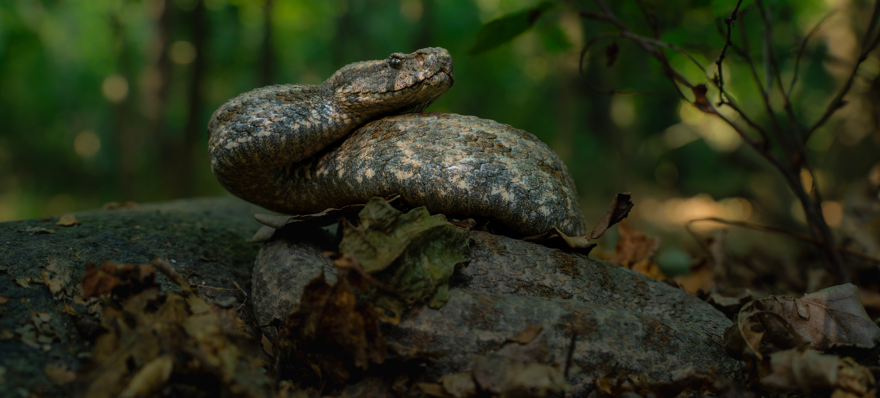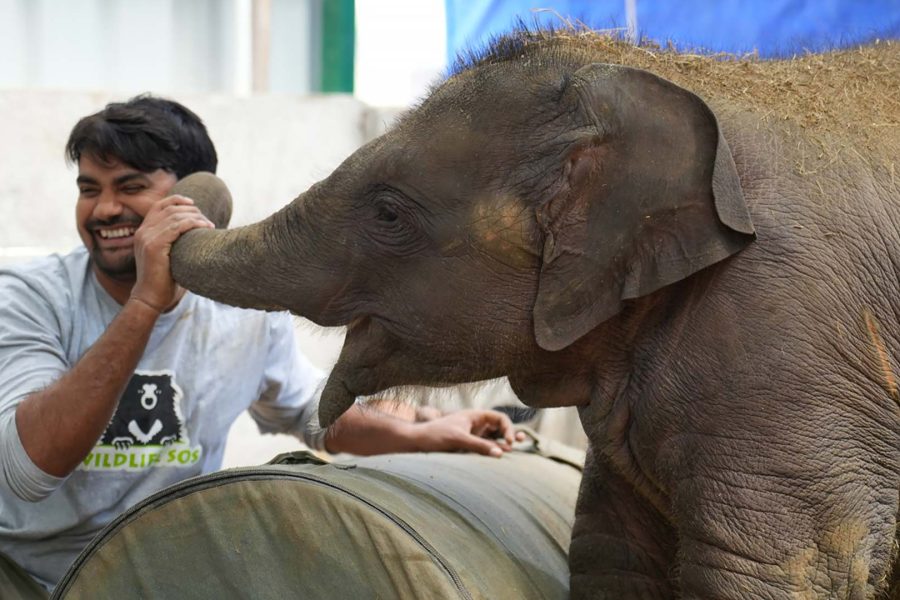Surender and Rohtas and rescued wolf snake
Last night, in the middle of a festive social event in Agra for Wildlife SOS-India and WSOS-USA staff, an emergency call was placed to our Wildlife SOS 24-Hour Animal Rescue Hotline. It seems that a snake was lodged in the plumbing of a washing machine at the residence of Col. Sanjay Sajjanhar.
According to one of our rescue staff members Ashish, “The Colonel’s daughter, Ms. Sanajana Sajjanhar, was walking towards the kitchen to get a drink of water at night when she found a wolf snake.” He said, “Although, only in 7 grade (class), the girl was very conscious and concerned of the welfare of snakes and other wildlife species and well aware that Wildlife SOS rescues snakes at any time.”
Ashish told me this morning that the snake was coiled inside some thin, plastic tubing leading out of the washing machine. Equipt with just a flashlight, he was able to monitor the movement of the snake and eventually coax it out of its hiding place with a piece of paper.
Indian wolf snakes are not venomous, but “oh boy” are they aggressive. Watch out! These small reptiles get very defensive when backed into a corner, or in this case the plumbing of a washing machine.
Even though this snake will not kill you or make you seriously ill by injecting venom produced by fangs of several other kinds of snakes in South Asia, the wolf snake can inflict quite a powerful bite. Wolf snake fangs and head anatomy are adapted for helping them capture lizards with very hard scales, such as skinks. Wolf snakes may predominantly feed on lizards, but are also common predators of amphibians like frogs.
The wolf snake is one of the common snakes in South Asia. It is nocturnal, meaning active at night and arboreal, meaning it spends a lot of the time in trees, whether it is active or resting.
Unfortunately, wolf snakes are often maimed or killed because they are mistaken for the common krait, which they look very similar to.
This similarity is not coincidental, as looking similar to one of the most dangerous venomous snakes in India helps this species survive. Fake it untill you make it, right? This similarity in snake appearance exemplifies a kind of protective mimicry that evolves in certain related wildlife species, including other species of snakes. For example, you may be aware that in the United Sates the king snake benefits by mimicking the appearance of venemous coral snakes. Appearing like another dangerous species helps keep predators away.
The common or Indian krait, interestingly enough, likes to prey on wolf snakes. So the lesson might be careful who you copy!
For more wildlife posts, including work with WSOS, visit Dr. Jordan’s blog on the National Geographic Society’s website.
To help us continue to rescue orphaned, injured or otherwise troubled animals, please visit our WSOS Donation’s Page.





